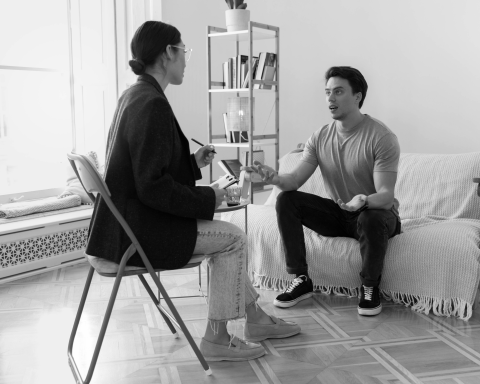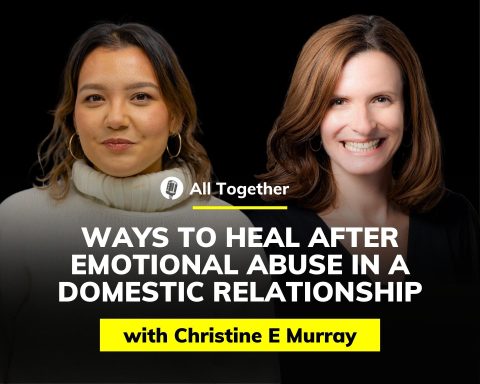Domestic violence is a problem that affects almost all individuals in this world, it doesn’t matter the age, gender, or even background.
Domestic violence itself is defined as the power misused by one adult in a relationship to control another. It is the building of control in a relationship through violence or other forms of abuse such as physical assault, psychological abuse, social abuse, financial abuse, or even sexual assault.
The most horrible thing is that domestic violence can be devastating to the physical and emotional well-being of the victim, as well as to the entire family.
Surprisingly, a case of domestic violence often goes unreported or unrecognized. This is because the victims often are too afraid to speak about it, or don’t even know where to turn for help.
This article will help define domestic violence, how it progresses through some stages, and provide some practical tips on preventing it.
How to identify domestic violence
As we all know, figuring out or identifying domestic violence is not an easy task. One of the many reasons is that victims don’t want to talk about their experience or even report it to the authorities because they are afraid.
Victims find it hard to pinpoint instances of abuse because it usually started with subtle, excusable behavior. But as time goes on, it simply becomes something more dangerous.
To protect yourself and your loved ones, look out for the signs of domestic violence which could include:
- Physical signs:
- Black eyes
- Bruises
- Busted lips
- Red or purple marks on the neck
- Sprained wrist
- Emotional signs:
- Anxiety
- Changes in sleep patterns
- Developing a drug or alcohol problem
- Low self-esteem
- Seeming fearful
- Depression
It’s important to remember that domestic violence can take many forms, may not always be immediately obvious, and is not just about violence. It can also be manifested in relationship dynamics where abusers sometimes control the victim to make them feel guilty or afraid to leave the relationship.
3 phases in the domestic violence cycle
Domestic violence often follows a predictable pattern, known as the “cycle of violence”. This cycle is made up of three distinct phases:
Tension-Building Phase
In this phase, the abuser tends to frequently feel angry and they may start to behave as controlling and possessive. Here, the victim may start to feel on edge and start to walk on eggshells around the abuser to avoid triggering the latter’s anger. This phase can last for days, weeks, or even months.
Explosion or Acute Battering Phase
The next phase is where the abuser starts lashing out at the victim. During this phase, the victims might be injured or even killed. This phase usually lasts for a shorter period, often just a few hours.
Honeymoon or Reconciliation Phase
After the abuse has occurred, this phase takes place. This phase is characterized by the abuser showing remorse and promising to change. Then the victim may feel relieved that the violence has stopped, and may forgive the abuser and make excuses for their behavior. This phase can last for days or weeks, but then the cycle re-starts, and the victim may feel trapped in the relationship, hoping that the abuser will change.
Domestic abuse prevention tips
While we know that it’s not easy to identify domestic violence in a relationship, it doesn’t mean that it can’t be prevented. There are a few things that we could do to help prevent domestic violence such as:
Education
It is found through research that education can be one of the most vital strategies to prevent domestic violence in a relationship. Education about gender or relationship issues is shown to be the most effective in preventing domestic abuse. Other than that, promoting healthy, respectful, and nonviolent relationships is also considered a major step in preventing it.
Tolerance
According to experts, one of the most important qualities in a couple is tolerance. On top of that, it’s also regarded as one of the methods for averting domestic violence in a partnership. What it refers to is the ability to accept and respect differences in our partner, even if we disagree. With tolerance, people will be less likely to be angry when faced with disagreements or conflicts.
Love and affection
Love and affection are important aspects of any healthy relationship. They are characterized by feelings of warmth, fondness, and caring for the other person. Love and affection can play a role in preventing domestic abuse by creating a positive and supportive environment in the relationship. Through a positive environment, couples tend to handle conflict more peacefully and reduce the possibility of abuse, thanks to open and honest communication and also trust and respect between partners.
Resources
There are a lot of resources that could help the victims or survivors of domestic abuse to cope with their situation. Domestic violence is not tolerated; it is never acceptable and should always be reported to the authorities. Some of these resources include The National Domestic Violence Hotline, the National Dating Abuse Helpline, or Men Stopping Violence. There are also resources that could help those who work with the victims and survivors of domestic violence, such as this research.
In conclusion
In conclusion, domestic violence is a problem that affects a lot of people, no matter their gender, sex, race, etc. It can take the form of physical, emotional, psychological, sexual, and financial abuse.
It is important to understand that domestic violence is not a private matter and it is not the victim’s fault. Identifying domestic violence can be difficult as it often starts with simple and subtle behaviors that can be easily dismissed or excused. The cycle of violence is made up of three distinct phases: tension-building, explosion or acute battering, and honeymoon or reconciliation. To prevent domestic violence, education, tolerance, love and affection, and self-control are important factors. Some resources could help the survivors and victims of domestic violence.
If you would like to take your reading on domestic violence further, check out the Family Science Labs. Using the research of the Institute for Life Management Science, the lab produces courses, certifications, podcasts, videos and other learning materials. Visit the Family Science Labs today.
Photo by Anastasia Shuraeva




